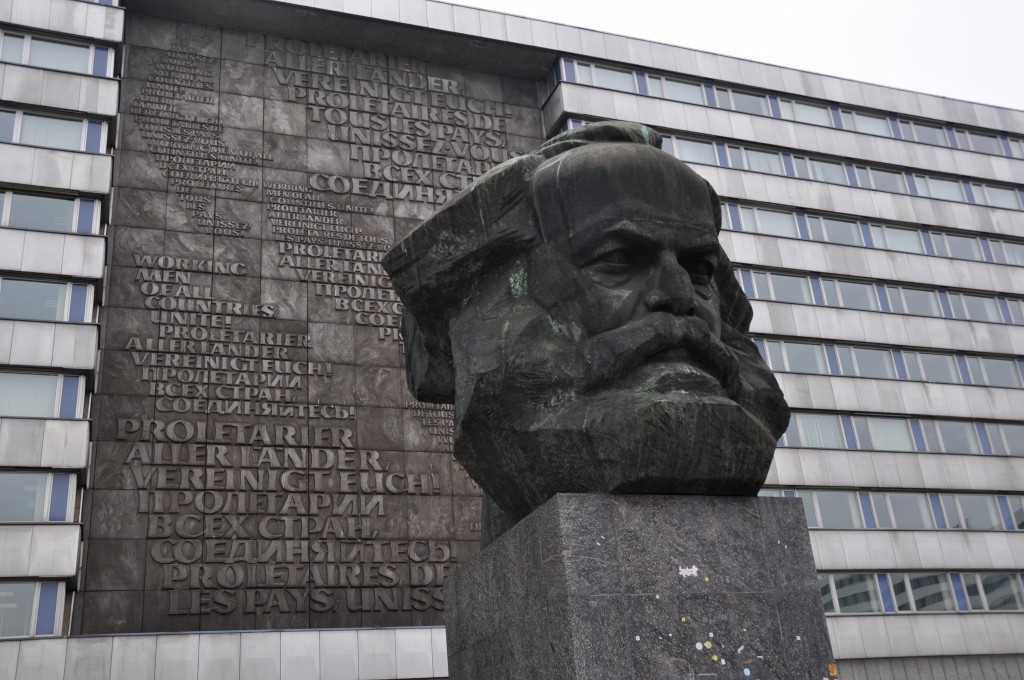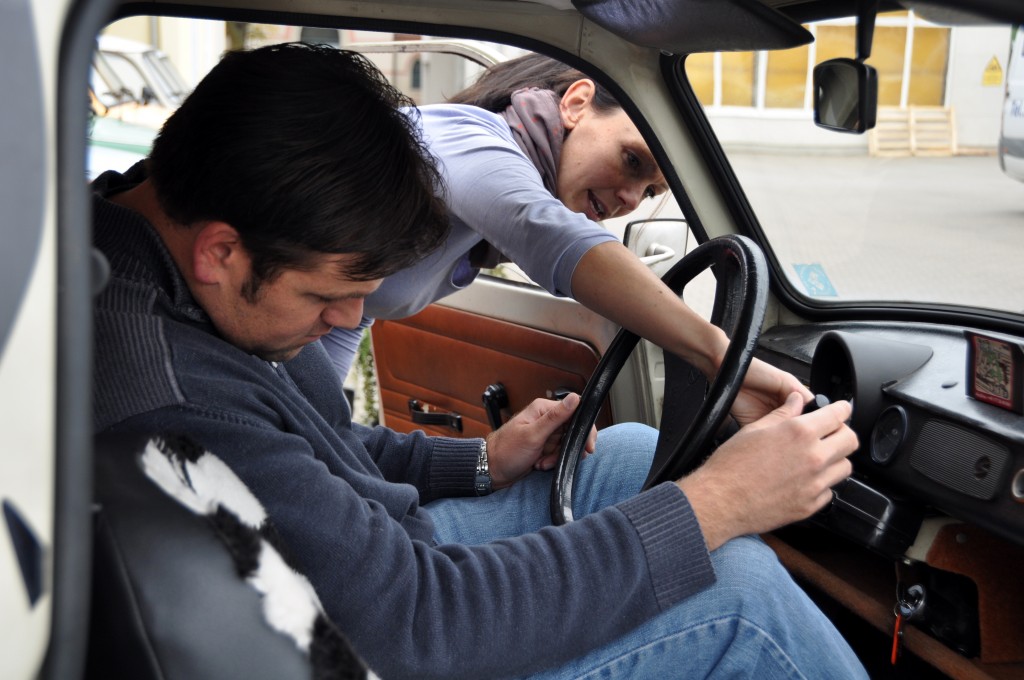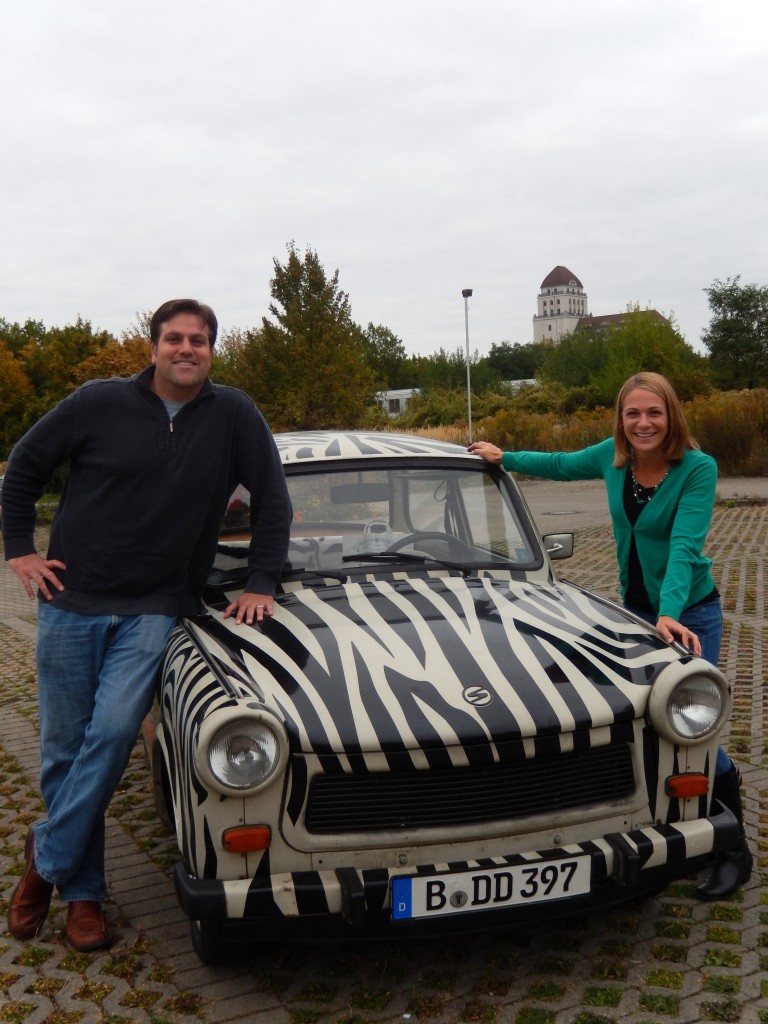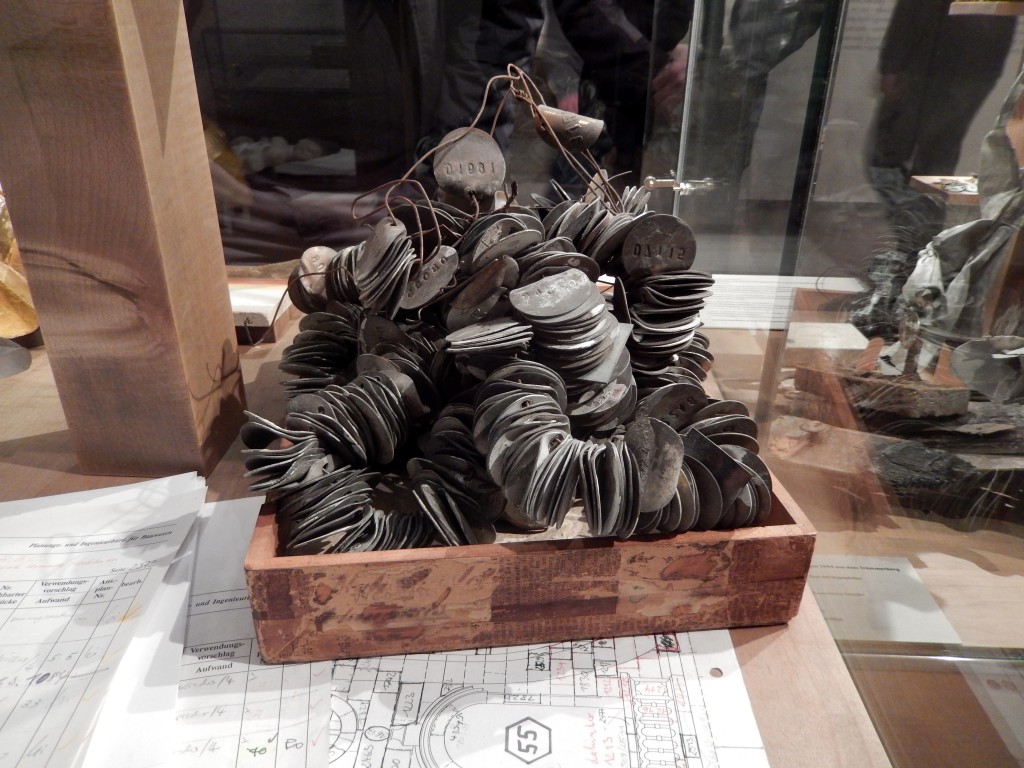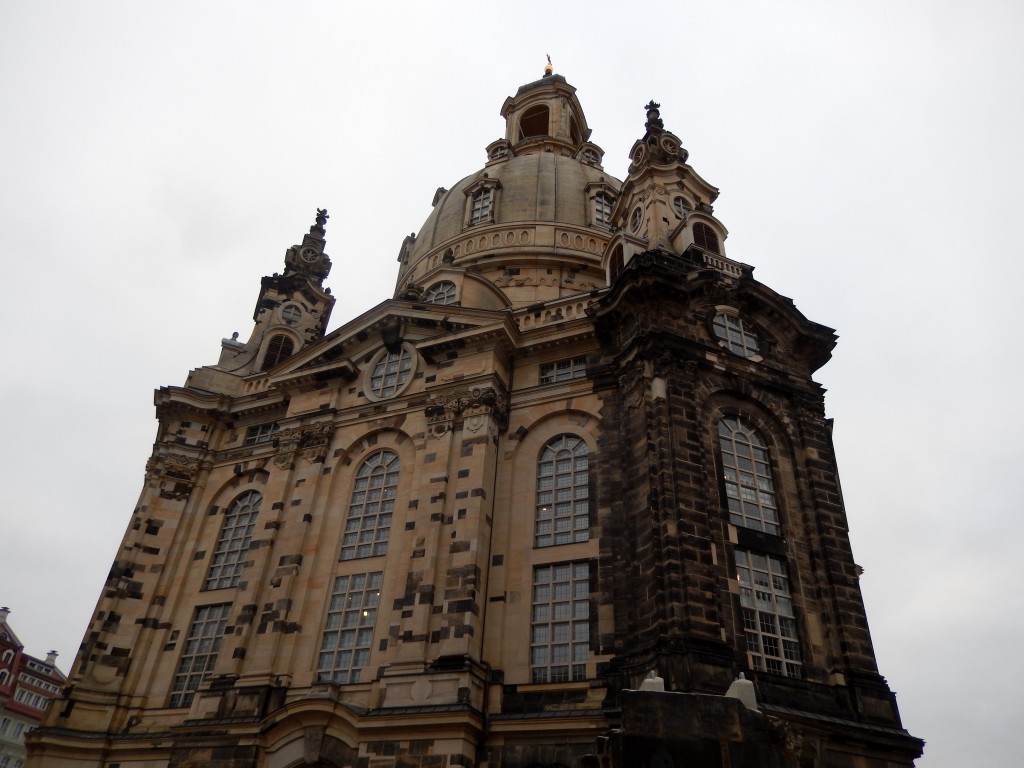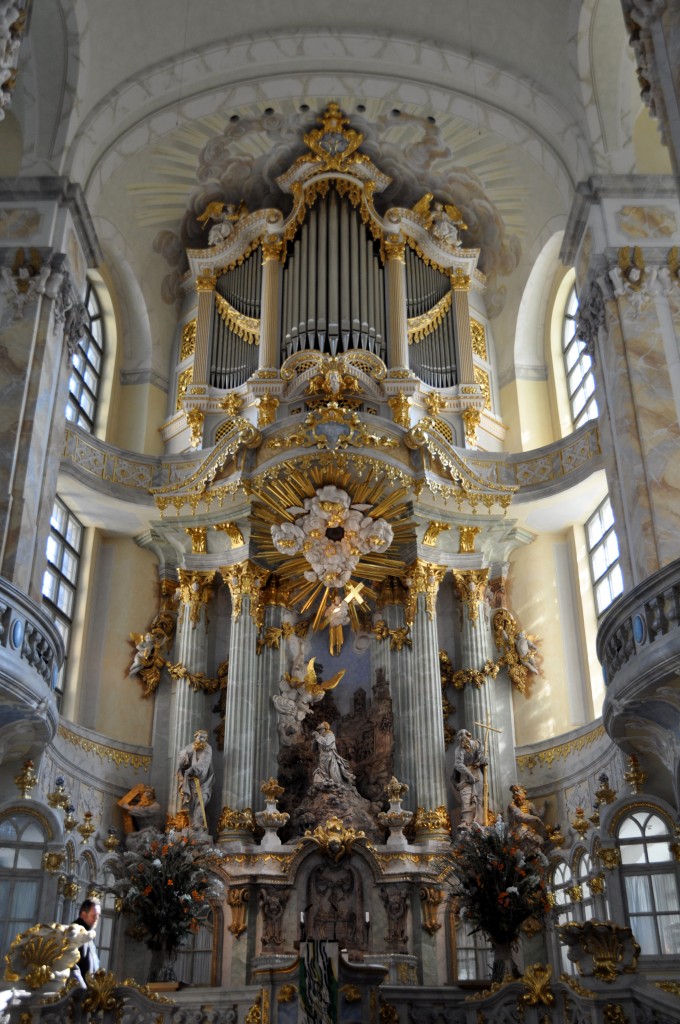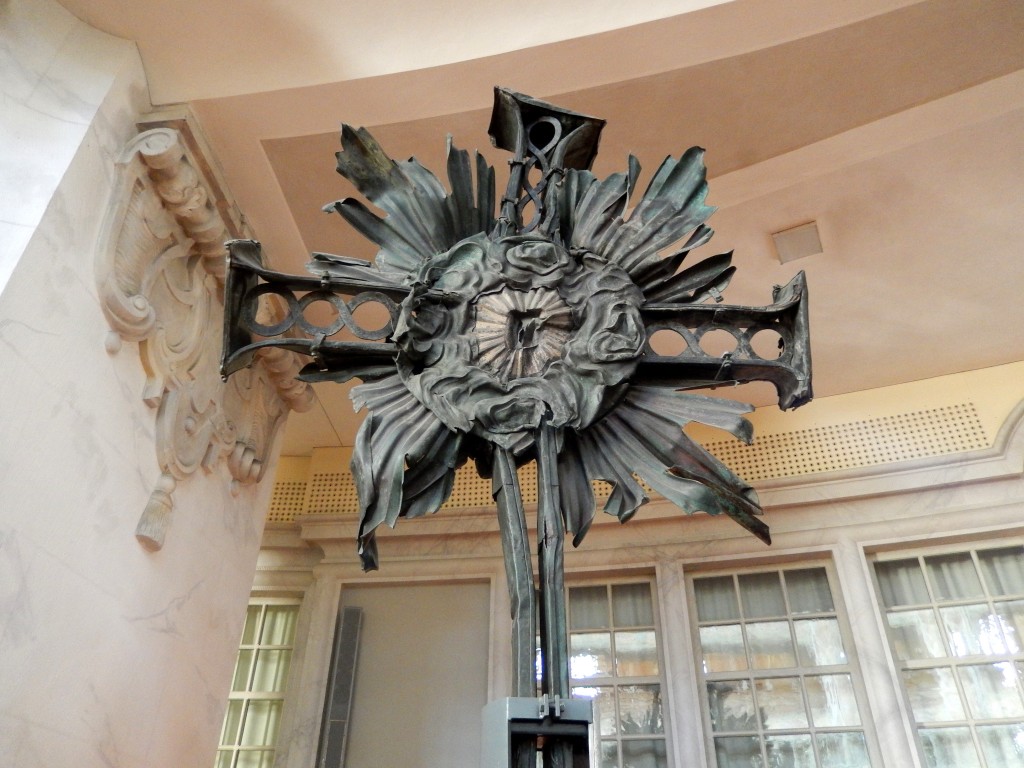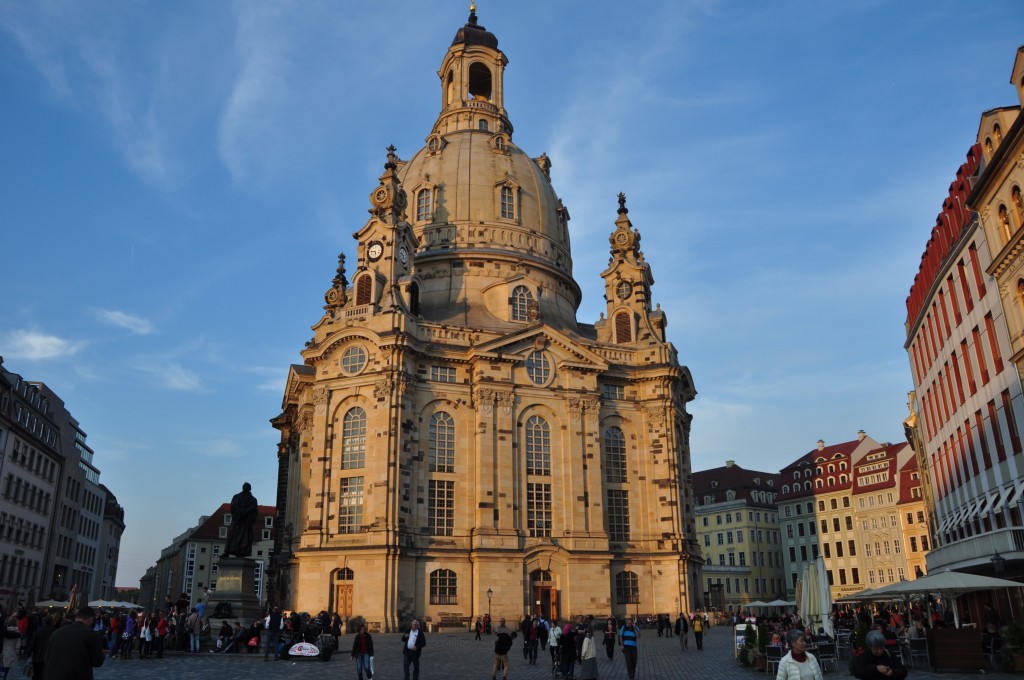First direction on the road trip: East. Specifically, to three towns that used to be large cultural and industrial hubs of former East Germany during the time of the GDR (German Democratic Republic).
Leipzig – Home to the “Peaceful Revolution” of 1989, Leipzigers are still proud of the role they played in the disintegration of the GDR. We visited the former Stasi headquarters, which is now a museum, where hundreds of thousands of protesters began their civil resistance. Visitors can still see the large masses of official papers and spy records that were turned to pulp prior to the collapse of East Germany.
We have seen a lot of WWII memorials during the last two years, including here in Leipzig. At the site of the former Great Synagogue of Leipzig, which was burned in November of 1938, during Kristallnacht (the Night of Broken Glass), stand 140 bronze chairs symbolizing pews that no longer offer refuge for Jewish worshipers.
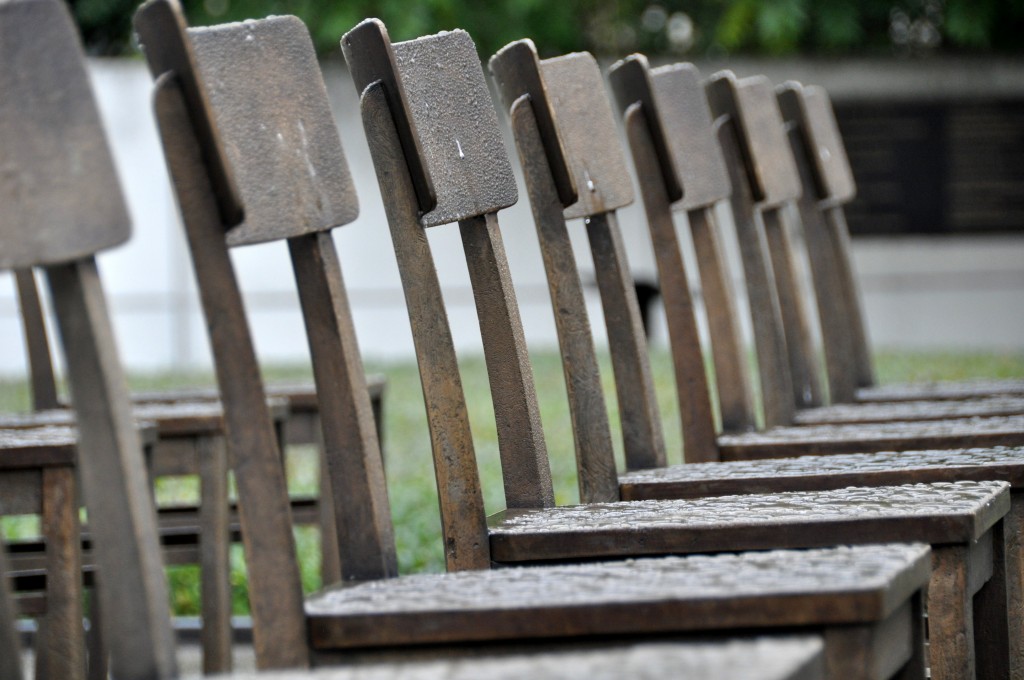 Unfortunately, Germany’s history from 1930 on gets far more attention than any other era, such as Germany’s “Belle Epoch”, the 18th century. Another claim to fame for Leipzig is the Thomaskirche, where Johann Sebastian Bach worked, composed, and conducted the boys’ choir from 1723 until 1750. His 12 children were baptized in the church and his remains are buried beneath the altar. We listened to a performance of the Thomamerchor (boys choir), but there were a few voices that sounded pretty deep, so I am skeptical…but it was still beautiful!
Unfortunately, Germany’s history from 1930 on gets far more attention than any other era, such as Germany’s “Belle Epoch”, the 18th century. Another claim to fame for Leipzig is the Thomaskirche, where Johann Sebastian Bach worked, composed, and conducted the boys’ choir from 1723 until 1750. His 12 children were baptized in the church and his remains are buried beneath the altar. We listened to a performance of the Thomamerchor (boys choir), but there were a few voices that sounded pretty deep, so I am skeptical…but it was still beautiful!
Chemnitz – Known from 1953 to 1990 as “Karl-Marx-Stadt”, Chemnitz still bears large witness to the days of the GDR. At a height of over 7 meters (plus a 4 meter foundation), this is the largest bust in the world. Behind the bust is the final statement of Marx’s The Communist Manifesto, written in four different languages: “Working men of all countries unite.”
Dresden – Dresden is actually the 4th largest city in Germany, in terms of square mileage, which no one realizes (including us!) until they get there. It is actually larger than Munich, but has less than half as many residents. We decided to see as much of Dresden as possible, as authentically as possible. Yup…that meant in a 1950’s East German Trabi!
Here is Joe getting a quick lesson before we headed off on our 2.5 hour adventure:
Let me answer a few of your obvious questions before moving on: No, he definitely didn’t fit in the Trabi. Yes, he drove hunched over for 2.5 hours in order to see out the windshield. Yes, the steering wheel was closer to his crotch than his knees. No, the gear shift was located behind the steering wheel. Yes, the gas pedal had to be pushed down at all times to maintain a stream of gas to the engine and prevent stalling. Yes, the engine did completely shut off while we were driving down a hill, because what sane person keeps their foot on the gas pedal while careening down a hill?! Yes, the smell of exhaust from the gas/oil fuel mixture lasted the entire 2.5 hours. Yes, we had to scream during most of the tour to hear each other over the thunderous engine. No, there was neither power steering nor power breaks in the Trabi. Yes, the seats are covered in zebra-print faux-fur.
He actually did a really great job: listening to the guide’s steady stream of information, navigating city driving, keeping the Trabi engine running, AND waving at all the people taking his picture. Looking back, I can’t believe that we drove for 2.5 hours (with only about 15 minutes outside of the car) and that the tour guide talked the ENTIRE time. Dresden is soooo much bigger than we realized, or would have experienced on foot.
We had a great time enjoying Dresden’s museums and historical sites, but I am going to focus on her most beloved symbol: the Frauenkirche. Originally completed in 1743, the Frauenkirche is a story of renewal and reconciliation. On February 13, 1945 Allied forces bombed Dresden. Fire from the air raid burned out the entire interior of the church and pieces of sandstone from the pillars began to explode as a result of the 1000oC/1832oF heat. Two days later, the huge stone dome collapsed under its own weight of 12,000 tons! The rubble then remained in the middle of the Altstadt for nearly 50 years, as Dresden continued to struggle through post-war Germany and then a divided Germany. The political and economic circumstances in the GDR stifled any hope of reconstruction. Surrounded by a wall and covered in roses, the debris became an anti-war symbol.
It wasn’t until 1993, that the ruins began to be removed, sorted, and categorized. Over 120,000 pieces of the original church were researched and then housed in a large storage area until they could be placed again in the new building. A small museum documenting the reconstruction of the church is located in the basement of the church, which was also used as a shelter during the bombing raids. These are some of the tags used to label each of the original pieces of rubble.
The restoration of the church lasted 15 years, but finished one year early in June of 2005. The original stones can be easily identified by their darker color.
The altar is an amazing story as well. Eighty percent of the original alter was restored and used to build the altar we see today. Pretty impressive if you ask me, especially considering that the rubble lay exposed to the elements for 48 years!
Inside the Frauenkirche is the original spire cross. It was discovered in 1993 among the rubble, only slightly bent and without any color. Again…another amazing story, considering the extreme heat of the inferno that was Dresden for many days and the 48 years that it spent waiting in the wreckage of the church. On February 13, 2000 – the 55th anniversary of the bombing raid – a new spire cross was gifted to the Frauenkirche from Great Britain. Crafted by the son of one of the pilots who bombed Dresden, the new cross embodies the Frauenkirche’s mission to “build bridges, live reconciliation, and bolster belief”. The old cross is now a place of remembrance and reflection for visitors and worshipers.
It is a pretty amazing and inspiring story, if you ask me. I think it shows great strength on their behalf, as well as the Brits, to move forward and reinvent themselves, while continuing to pay homage to the past. It takes a stronger person to forgive than to forget.

